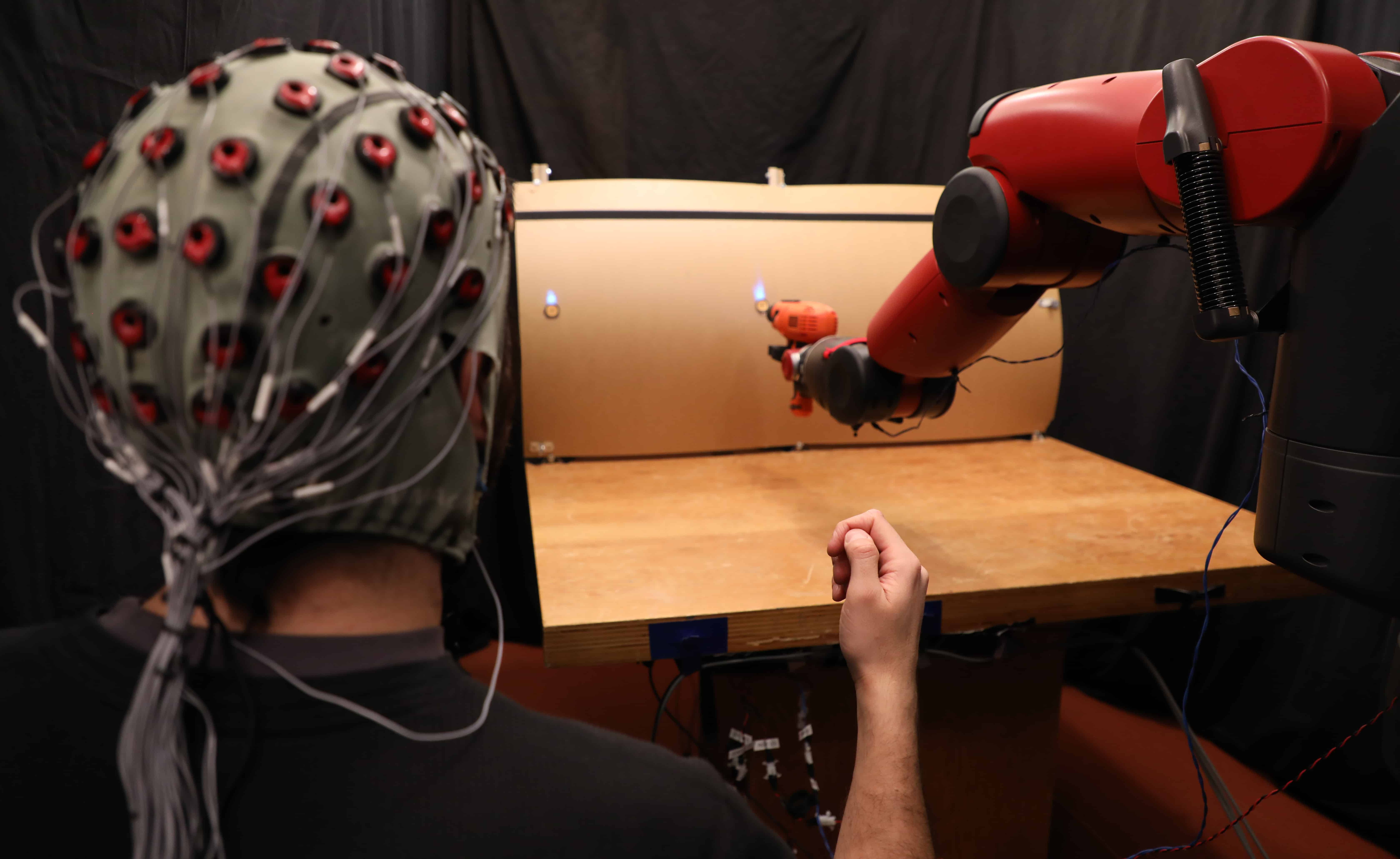US team controls robot with brainwaves and hand gestures
Researchers in the US have developed technology for controlling robots with brainwaves and hand gestures

The group, from MIT’s Computer Science and Artificial Intelligence Laboratory (CSAIL), claims that its system could pave the way for a new, more intuitive way of programming robots and allow users to instantly correct robot mistakes with nothing more than brain signals and the flick of a finger.

By monitoring brain activity, the system can detect in real time if a person notices an error as a robot does a task. Using an interface that measures muscle activity, the person can then make hand gestures to scroll through and select the correct option for the robot to execute.
To create the system the team harnessed the power of electroencephalography (EEG) for brain activity and electromyography (EMG) for muscle activity, putting a series of electrodes on the users' scalp and forearm. The group claimed that merging these two metrics allows for more robust bio-sensing than previously possible.
Register now to continue reading
Thanks for visiting The Engineer. You’ve now reached your monthly limit of news stories. Register for free to unlock unlimited access to all of our news coverage, as well as premium content including opinion, in-depth features and special reports.
Benefits of registering
-
In-depth insights and coverage of key emerging trends
-
Unrestricted access to special reports throughout the year
-
Daily technology news delivered straight to your inbox










Water Sector Talent Exodus Could Cripple The Sector
Maybe if things are essential for the running of a country and we want to pay a fair price we should be running these utilities on a not for profit...